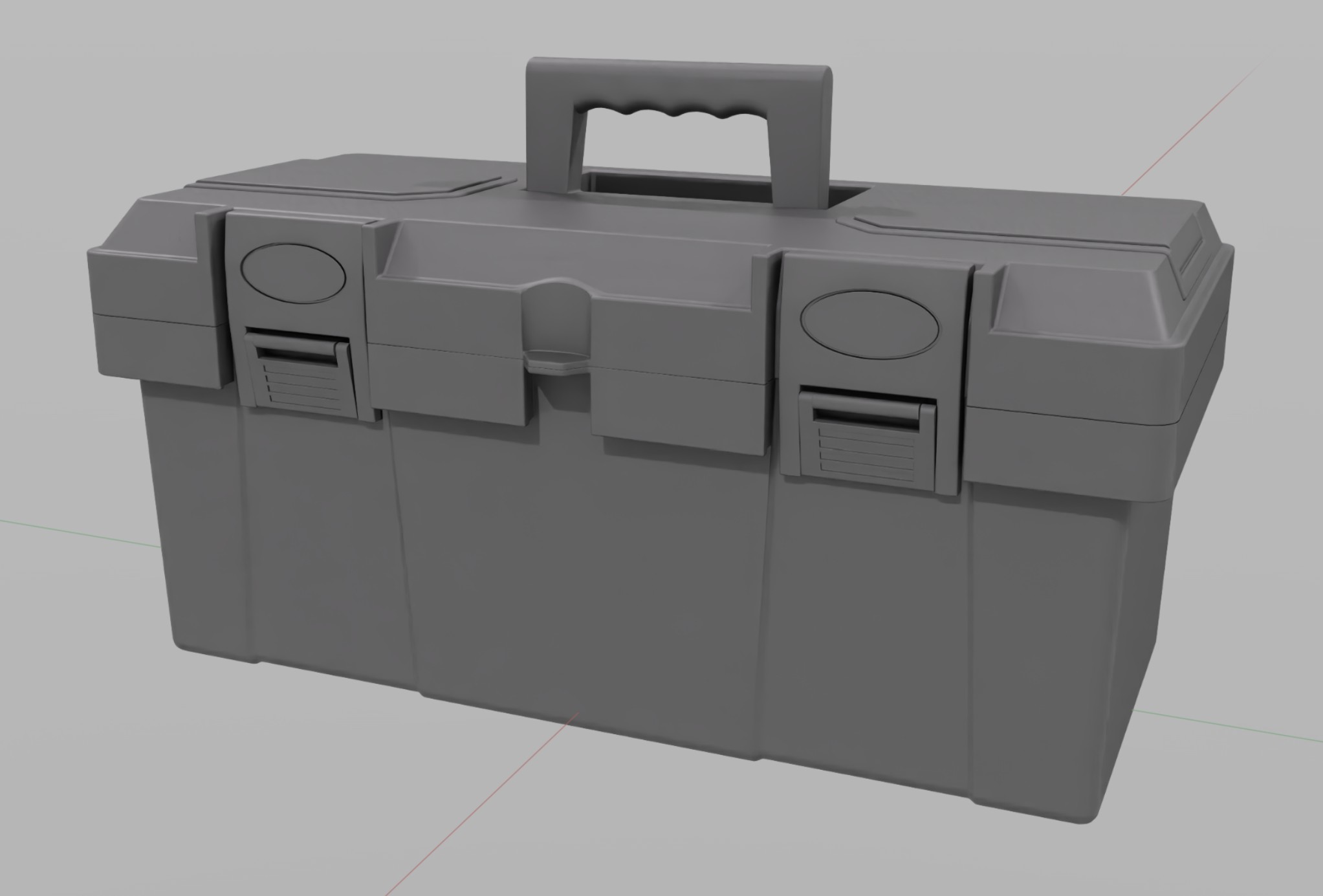identical-mesh-consistency#
Code |
VG.024 |
|---|---|
Validator |
Manual |
Compatibility |
core usd |
Tags |
✅ |
Summary#
Repeated occurrences of identically shaped objects should have identical mesh connectivity
Description#
When identically shaped and parameterized objects appear multiple times in an asset, all occurrences should have identical mesh connectivity - point positions and connections / edges between the vertices. This enables proper memory de-duplication optimizations and primvar usage (texture coordinates, normals, etc.)

The locks on this toolbox are identical and should have identical mesh connectivity.#
Why is it required?#
Enables efficient memory de-duplication of identical meshes
Ensures consistent behavior across different instances of the same mesh, for example when applying a textured material or applying mesh decimation operations
Reduces file size and memory usage
Performance Impact Example:
Consider a .usdc file containing 100 identical screw meshes, each with 1000 polygons:
Compliant approach (identical meshes): 1MB
Non-compliant approach (unique meshes with different vertex connectivity): 11MB
This represents an 11x increase in file size when identical geometry is not properly deduplicated.
Examples#
#usda 1.0
# Optimal: Identical meshes with same point positions and vertex connectivity
def Mesh "pPlane1"
{
float3[] extent = [(-0.5, 0, -0.5), (0.5, 0, 0.5)]
int[] faceVertexCounts = [3, 3]
int[] faceVertexIndices = [0, 1, 2, 2, 1, 3]
point3f[] points = [(-0.5, 0, 0.5), (0.5, 0, 0.5), (-0.5, 0, -0.5), (0.5, 0, -0.5)]
}
def Mesh "pPlane2"
{
float3[] extent = [(-0.5, 0, -0.5), (0.5, 0, 0.5)]
int[] faceVertexCounts = [3, 3]
int[] faceVertexIndices = [0, 1, 2, 2, 1, 3]
point3f[] points = [(-0.5, 0, 0.5), (0.5, 0, 0.5), (-0.5, 0, -0.5), (0.5, 0, -0.5)]
}
# Suboptimal: Identical meshes with same point positions and different vertex connectivity
def Mesh "pPlane1"
{
float3[] extent = [(-0.5, 0, -0.5), (0.5, 0, 0.5)]
int[] faceVertexCounts = [3, 3]
int[] faceVertexIndices = [0, 1, 2, 2, 1, 3]
point3f[] points = [(-0.5, 0, 0.5), (0.5, 0, 0.5), (-0.5, 0, -0.5), (0.5, 0, -0.5)]
}
def Mesh "pPlane2"
{
float3[] extent = [(-0.5, 0, -0.5), (0.5, 0, 0.5)]
int[] faceVertexCounts = [3, 3]
int[] faceVertexIndices = [0, 1, 3, 0, 3, 2]
point3f[] points = [(-0.5, 0, 0.5), (0.5, 0, 0.5), (-0.5, 0, -0.5), (0.5, 0, -0.5)]
}
How to comply#
Use Scene Optimizer Fuzzy Deduplicate to deduplicate meshes with identical shape but different connectivity
When splitting a previously merged mesh into multiple separate meshes, de-duplicate/replace any resulting geometry that should be identical with other geometry. For example bolts and screws or wheels in a vehicle.
When positioning duplicated geometry, don’t do so by moving the points / vertices directly. Instead, apply transformation (xform ops) to the geometry to position it.
Use identical mesh data for geometrically identical objects
Consider using USD’s instancing capabilities for repeated geometry